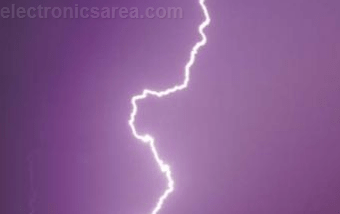Static Electricity Definition
Static electricity is, as its name indicates, static (no movement), since unlike the current that everyone knows, it is a current that is going nowhere. Both, the direct current and the alternating current flow in some direction, but the static electricity does not.
The static electricity appears mainly by the effect of friction between two bodies. This effect occurs, for example, when we walk on a carpet, when a person brushes his hair, etc.
The friction between the comb and the hair cause that electrons move from your hair to the comb, so one body lose and the other one gains electrons. When there is friction between two bodies, electrons move from one body to another, so that a body now has more electrons and hence it is more negative and the other has fewer electrons and hence it is more positive.
Lightning Strike
As there is no way for the electrons to return to the original body, this imbalance remains. If the friction is not maintained, the static electricity would disappear gradually. If the friction between two bodies continues, the imbalance will increase until an electric discharge happens (The electrons find the way back to their previous state).
Lightning Strike
Lightning Strike is an atmospheric discharge of electricity. A voltage difference isn’t created by the friction between the loaded clouds increases and becomes very big. When this happens, the electricity jumps from a cloud to another or from a cloud to the earth.
Examples of Static electricity
There are many examples we can see the static electricity:
- Lightning Strike.
- Combing or brushing clean dry hair.
- When you walk across a carpet.
- When you rub a balloon on your hair and the balloon attracts your hair.
- When you live, your car and touch your car’s door.
Static electricity doesn’t have any known application.

